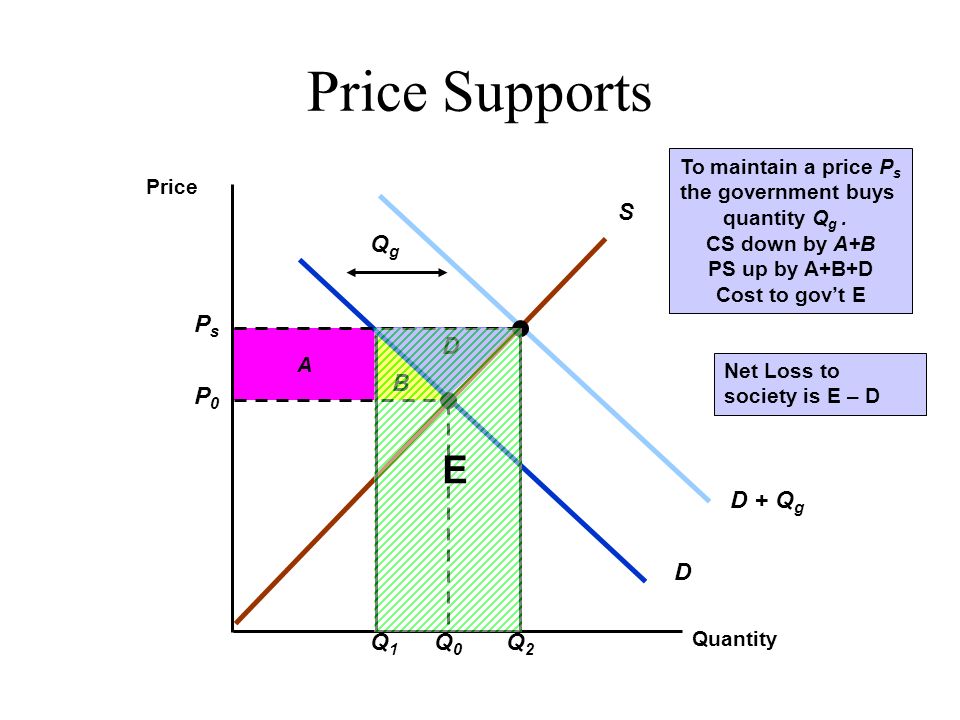Deadweight loss sometimes called efficiency loss occurs when economic surplus is not maximized.
Deadweight loss price floor government buys surplus.
Non optimal production can be caused by monopoly pricing in the case of artificial scarcity a positive or negative externality a tax or subsidy or a binding price ceiling or price floor such as a minimum wage.
Description of how price floors operate in a competitive market and the effects on consumer surplus producer surplus and social surplus using supply and dem.
How price controls reallocate surplus.
The effect of government interventions on surplus.
It can be caused by price floors price ceilings excise taxes noncompetitive markets or negative and positive externalities.
C a deadweight loss triangle whose corners are bec.
The government sets a limit on how high a price can be charged for a good or service.
An example of a price ceiling would be rent control setting a maximum amount of money that a landlord can.
A price floor is the lowest legal price a commodity can be sold at.
An example of a price floor would be minimum wage.
Refer to figure 4 6.
Price floors are also used often in agriculture to try to protect farmers.
D a deadweight loss triangle whose corners are cde.
Taxation and dead weight loss.
Taxes and perfectly inelastic demand.
The cost to the government of the price support is equal to the cost of the surplus in the market represented in gray.
If you re seeing this message it means we re having trouble loading external resources on our website.
A price floor of p1 causes.
B excess supply equal to the distance ab.
A a deadweight loss triangle whose corners are abc.
Price floors are used by the government to prevent prices from being too low.
A excess demand equal to the distance ab.
The government sets a limit on how low a price can be charged for a good or service.
Figure 4 6 shows the demand and supply curves for the almond market.
The government believes that the equilibrium price is too low and tries to help almond growers by setting a price floor at pf.
Deadweight loss also known as excess burden is a measure of lost economic efficiency when the socially optimal quantity of a good or a service is not produced.
Example breaking down tax incidence.
Practice what you have learned about the impact of prrice controls and quotas on consumer surplus producer surplus total surplus and deadweight loss in this exercise.
Percentage tax on hamburgers.
Deadweight loss is a decrease in efficiency caused by a market not reaching a competitive equilibirum.
The most common price floor is the minimum wage the minimum price that can be payed for labor.
What area represents the deadweight loss after the imposition of the price floor.
Causes of deadweight loss.

